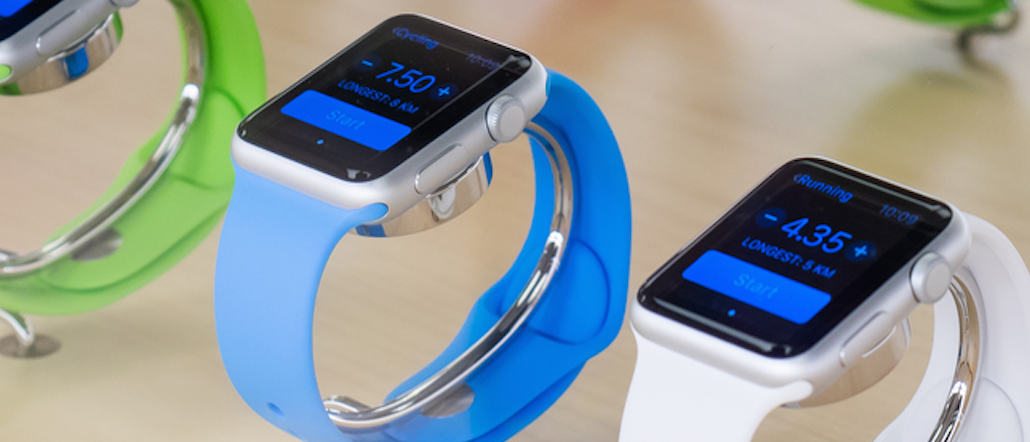
While Apple is looking to reinvent the classic watch as a powerful, personal piece of technology, Neiman Marcus is going in the opposite direction. The luxury retailer is entering the vintage-watch marketplace, hoping to cash in on the appeal of luxury, handmade timepieces that are often worth their weight in gold and absolutely unable to send a single email.
Appearing the same day that the Apple Watch went on sale online, Neiman Marcus’ announcement has impeccable timing. Tech fever is gearing up to turn the watch industry on its head (a Juniper Research report estimates that by 2019, advertising spent on smartwatches will reach $70 million, up from $1.5 million in 2015). But the department store has countered by offering a platform to purchase and sell vintage luxury watches. According to Larry Pelzel, director of the precious-jewelry department at the store, the timing wasn’t intentional — although it’s certainly suspect.
Neiman Marcus has partnered with vintage watch trade-in company Crown & Caliber to offer this platform, which is for the Rolexes and Pateks of the world. These watches are handmade and, according to Pelzel, only become more valuable with age. That’s an appeal — timelessness, increasing market value over time — that the Apple Watch, as a piece of technology, is projected to lack.
“The Apple Watch is cool and fashionable. It’s very much 2015,” said Pelzel. “Who knows what 2016 will bring? It will be interesting to see how the life of the Apple Watch lasts and where it goes.”
When it comes to cost, certain models of the Apple Watch fall in the same ranks as other, more traditional watches in the luxury market. Prices for the wearable begin around $350 for the Sports Edition and can run up to $17,000 for the 18-karat gold version. But unlike vintage watches, the Apple Watch’s timelessness could be compromised by its technology, despite its price.
According to Erik Pavelka, CEO of Martini Media, it doesn’t matter how much anyone spends on the Apple Watch — it’s bound to become obsolete. He called it a “short-term purchase”; therefore, the marketplace for vintage, luxury watches isn’t threatened by the wearable.
“As technology is infused into our lives, there’s still a timelessness that people are shopping for. I think it makes it quite interesting as a marketplace: Vintage items can still have a life,” said Pavelka.

Hamilton Powell, founder of Crown & Caliber, started his company in 2013 to help “legitimize” the pre-owned watch marketplace. After experiencing 300 percent year-over-year growth since its launch and securing a partnership with Neiman Marcus, Crown & Caliber has become a proper solution to reselling valuable timepieces, rather than riskier platforms like Craigslist and eBay.
Powell sees the Apple Watch is an exciting development for the overall watch market, but he doesn’t expect it to have much impact on the vintage-luxury marketplace.
“It’s already exposing individuals to having a watch who have never really thought about one before,” said Powell. “But it’s going to be hard for the Apple Watch to be last. There are very few things you can bank on in tech, and one is that it will become obsolete.”
For Pavelka, new Apple gadgets have the highest lux appeal when they’re first introduced to the market, an appeal that fades once the technology moves to the mainstream.
“I could see the Apple Watch coming down to the masses quite quickly. You might have a pop of exclusivity and uniqueness, but it should go mainstream soon enough,” he said.
Meanwhile, the Neiman Marcus trade-in program is primarily for the collector who has about five or six Swiss timepieces on hand that, no matter how old they are, have maintained value (unlike the Apple Watch, which Pelzel said is something that the younger generation “has to have”). The owner can trade in the old watches they no longer want and receive the appraisal value (a figure determined by Crown & Caliber’s experts) in the form of a Neiman Marcus gift card to put toward a new investment.
Sucharita Mulpuru-Kodali, a Forrester analyst who contributed to the research firm’s “The Future of Shopping” report, found that retailers are smart to target the older shopper, for one simple reason: They have more money.
Neiman Marcus’s strategy to expand upon its collectibles is good strategy for the department store, according to Mulpuru-Kodali, as they’re focusing on the customer they already have.
“When you look at Neiman Marcus, their core customer is the older customer,” said Mulpuru-Kodali. “[This program] is an extension of their collectibles, and there’s residual value to growing that. Jewelry is timeless.”
As for the Apple Watch, Mulpuru-Kodali doesn’t foresee that same value.
“Anyone who spends $10,o00 on an Apple Watch obviously has $10,000 to lose,” she said. “I would love to see the Apple Watch numbers stripped out from Silicon Valley and Bay Area, because that’s not representative of the way anything gains adoption; that could be distorting things. We’ll see soon enough.”
More in Marketing

Pandora is betting on AI agents to scale service and emotional selling during the peak holiday season
Pandora is using AI agents to scale customer service and replicate emotional in-store selling online, just as peak season puts pressure on margins and teams.

Rembrand’s CEO wants to grow virtual ad placements in streaming, and he’s looking elsewhere for models
Omar Tawakol wants to improve advertising within the streaming world, and is working with advertisers and publishers to improve that experience.

Marketers are keen to use generative AI in ad campaigns, but hidden costs lurk
Marketers across the industry want to use AI to cut down on time spent in creative production. It’s not so simple in practice.





